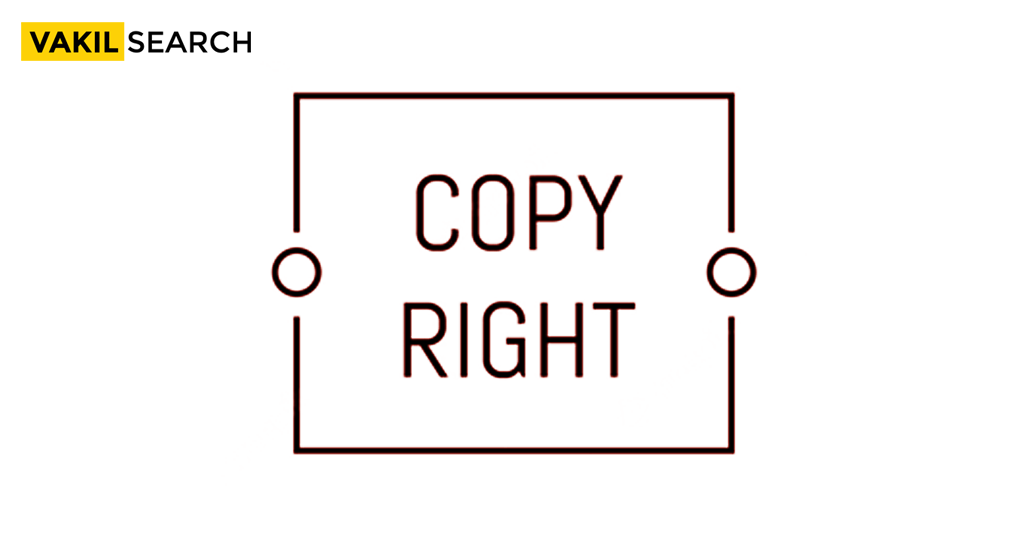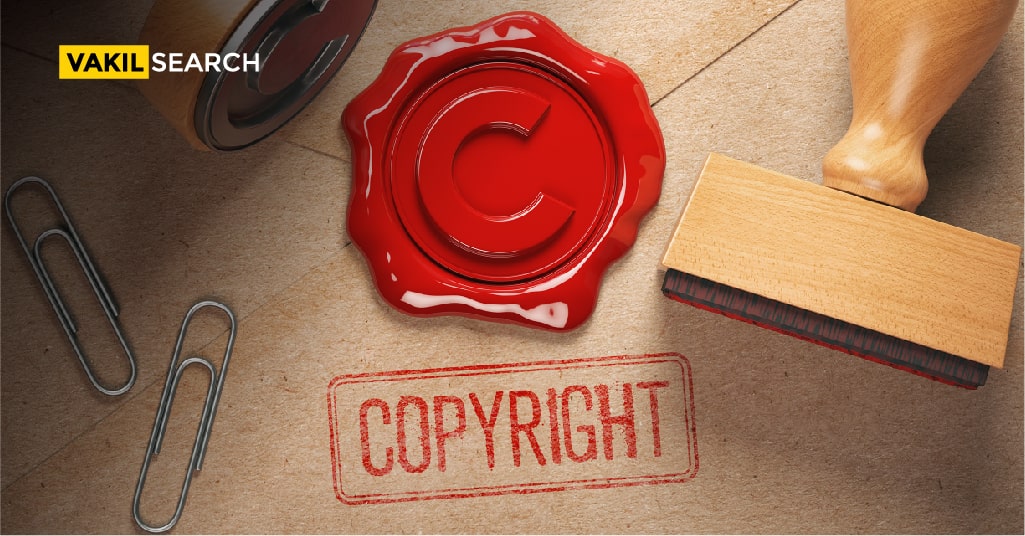Copyrights are an important part of Intellectual Party Rights (IPR). Copyrights serve the purpose of aiming for and encouraging creativity in various kinds of works. This article explains the various types of copyrights one can register for.
Overview
In the world of intellectual property rights (IPR), copyright stands as a cornerstone, safeguarding the creative endeavors of individuals. Governed by The Copyright Act, 1957, copyright is an exclusive right granted to the original creators of diverse works. These works span various categories and can be officially registered under this legal framework.
The Copyright Act defines the rights conferred upon authors, providing a legal shield for their creative output. The validity of copyright registration typically spans 60 years from the end of the year in which the work is first published. It’s noteworthy that the intention of intellectual property rights in copyright is to protect the originality of the work, irrespective of its subjective quality or artistic merit.
Section 13 of The Copyright Act, 1957 delineates the original works eligible for copyright protection, encompassing a spectrum of creative endeavors. From literary and artistic works to musical compositions, the Act provides a comprehensive framework for safeguarding the intellectual property landscape in India.
What Does Copyright Mean?
Copyright is a part of IPR that includes rights of adaptation, reproduction, and communication to the public. Copyrights are provided to people for creativity in the fields of music, cinematography, works of literature, and any other form of innovation and creativity. A copyright is basically a ‘Right to copy’ only available to the original creator. Any unauthorised use of an original creator’s work shall be liable for Copyright Infringement as per the Copyright Act, 1957. There are copyrights associated with various types of work under the Copyrights Act of India.
What Are the Types of Copyrights in India?
Copyrights create an atmosphere for inspiring creativity by protecting the rights of the original creators of the work. There are various types of works covered under the Copyrights Act. The following are the different types of copyrights available in India.
1. Literary Works
Copyrights under this category cover works that include the original or unique creation of literature. Such literary works can be in the form of scripts, novels, biography, a thesis, technical books, and programs. The copyrights to these could be claimed irrespective of the literary merit, style, or quality of work. The copyright under literary work provides exclusive rights.
- To make variations of a work
- For a public performance of the work
- For giving away the work copies to the public
- For reproducing the work.
- To translate the work.
2. Dramatic Works
This is also a form of literary work. It includes any sort of preparation for a play that shall be performed, dumb show entertainment, drama, choreography, or fixed writing work. Dramatic works do not however include any kind of cinematographic films.
The copyright under dramatic work provides exclusive rights
- For making any variations of the work
- To reproduce the work
- To make the work reach the public
- To comprise the work in any cinematographic film.
3. Musical Works
Musical works are copyrightable in themselves. Musical works do not include lyrics or sound. For the protection of musical works, a separate application has to be made to the Copyright Office, though the work related to sound recordings is usually dependent on the musical works. A musical work doesn’t have to be written down, to enjoy copyright protection.
The Copyright for Songs in India under musical work provides exclusive rights
- For reproducing the musical work
- For reaching out the work to the public
- To make any kind of variation to the work
- To perform the musical work in the public
- To provide copies of the work to the public
- To make a sound recording or a cinematographic film in respect of the musical work.
4. Artistic Works
Such artistic works under the Copyright Act, of 1957 include the protection of artistic works that include original artwork including paintings, photography, buildings, diagrams, cartoons, molds, plans, etchings, cast for sculptures, graphics, and drawings, among others.
The copyright under artistic work provides exclusive rights
- To issue copies of the work to the public
- To include the artistic work in cinematographic films
- To make any adaptations to the work
- For reproducing the work
- For communicating the artistic work to the public
5. Cinematograph Films
Cinematographic films usually include every single recorded work with moving images and visuals. It is any work of a visual recording with the sound recordings, prepared by any process, be it analogous or digital, and contains video films. It could include visual recordings in any medium, and any method of keeping such visual records.
The copyright under cinematograph film work provides exclusive rights
- To hire, sell, or offer a copy of the film
- For allotting the cinematograph film to the public
- For making a copy or variations of the film.
6. Sound Recording
The sound recording shall include any sort of recording, be it in any form of storage medium. It could include any song that contains a singer’s voice with or without music, a podcast, or recorded audio. Sound recordings also include music, which is why the permission of the inventor or creator of the music is needed for the copyright protection of the sound recording.
The copyright under sound recording work provides exclusive rights
- To offer the sale or hire of any copy of the sound recording
- For communicating the sound recordings to the general public
- To create any other sound recording that symbolises it.
Documentation of the Copyright Registration
Documents Required For Copyright Registration
- Copyright Questionnaire: A comprehensive questionnaire providing detailed information about the work to be registered.
- Classification and Description of the Work: Clearly outlining the nature and categorisation of the creative work.
- No Objection from the Author: An explicit statement from the author of the work expressing no objection to the copyright registration.
- Power of Attorney for Copyright Filing: Granting legal authority for the filing of copyright on behalf of the author.
Specifications Must Contain the Following
- The Work for Which Registration is Required: A clear identification of the specific work for which copyright protection is sought.
- Two Copies of the Work: Physical or digital copies of the work that serve as tangible evidence during the registration process.
- Statement of Particulars and Statement of Further Particulars: Detailed statements providing additional information about the work and its authorship.
- Declaration of the Author/Applicant: An official declaration affirming authorship or ownership of the work.
- Power of Attorney in the Name of Lawyer: Empowering a legal representative to act on behalf of the author during the copyright registration proceedings.
Procedure for Copyright Registration
Step 1 – Documentation
Our first step is to assist you in preparing the necessary documentation. This includes the Application/Declaration Form and the Statement of Particulars required for the registration of your work with the registrar of copyright.
Step 2 – Application Filing
Once the documentation is ready, we proceed to file the application. Along with the application, two copies of the work must be submitted, accompanied by the prescribed government fee. The fee varies, ranging from ₹ 500 to ₹ 5000, depending on the nature of the work.
Step 3 – Copyright Examination
After the application is submitted, the copyright department initiates a 30-day waiting period. Following this period, an examination report is issued. This report either accepts the application or outlines objections that need to be addressed.
Step 4 – Objection Removal
In the event of objections, our team guides you in preparing a proper reply and offers personal representation. Once the objections are effectively addressed, the copyright registration process is completed, and your work is officially registered.
Conclusion
Copyrights form an inspiring atmosphere to enhance the creativity of works. However, if the creation is claimed for ownership for generations, it could be harmful to society’s progress. Hence, the time period of copyright protection in India was set to the term of life of the creator, until sixty years following the year of the creator’s death. Rigid copyright rules can affect the progress of a society. Therefore, countries enact copyright laws that strike a balance between the interest of the creators and the community. Reach out to the experts at Vakilsearch for the easiest and smoothest copyright registration: https://copyright.gov.in/ experience in the country. Our experts will guide you through every step of the process.
Frequently Asked Questions
What are the categories of copyright?
Copyright encompasses various categories, including literary works, artistic works, musical compositions, dramatic works, and audiovisual creations. These categories collectively define the scope of creative works eligible for copyright protection.
What is the classification of copyright?
Copyright is classified into several categories, such as literary, artistic, musical, and dramatic works. Each classification pertains to a specific type of creative expression, fostering a comprehensive legal framework for protecting intellectual property.
What are 5 copyright examples?
Five examples of copyrighted works include novels, paintings, songs, plays, and films. Copyright safeguards these creative endeavors, granting creators exclusive rights to reproduce, distribute, and display their work.
How many types of copyright law are there in IPR?
In intellectual property rights (IPR), there are several types of copyright laws, each tailored to specific creative categories. These include laws governing literary works, artistic creations, musical compositions, and more.
What is a copyright example?
A copyright example could be a bestselling novel, an iconic painting, a chart-topping song, a critically acclaimed play, or a blockbuster film. These creative works exemplify the diverse range of expressions protected by copyright.
What are the four characteristics of copyright?
The four key characteristics of copyright include exclusivity (rights granted only to the creator), originality (protection for unique creations), fixation (expression in tangible form), and duration (limited but renewable protection period).
What are the types of copying in copyright?
Types of copying in copyright include reproduction, distribution, public performance, and creation of derivative works. These exclusive rights empower copyright holders to control how their creative works are used.
What are the functions of copyright?
Copyright serves to protect the rights of creators by providing exclusive control over the reproduction, distribution, performance, and adaptation of their works. It encourages innovation, creativity, and the fair compensation of artists.
Who owns copyright?
The creator or author of a work is the initial copyright owner. However, ownership can be transferred or assigned to others through agreements or contracts, allowing for varied arrangements depending on the circumstances.
What is the copyright symbol called?
The copyright symbol, denoted by the © symbol, is called the copyright notice. It signals that a work is protected by copyright, serving as a reminder of the exclusive rights held by the creator.
What is a famous example of copyright?
A famous example of copyright is J.K. Rowling's 'Harry Potter' series. The books and subsequent films are iconic creations protected by copyright, showcasing the impact and value of copyright in the creative industry.
What are the types of copyright in India?
In India, copyright covers literary works, artistic works, musical works, cinematographic films, sound recordings, and more. These categories outline the diverse range of creative expressions eligible for copyright protection.
What are the advantages of copyright?
Copyright provides creators with exclusive rights, encouraging innovation and creativity. It facilitates fair compensation, protects against unauthorised use, and promotes the growth of the creative industry by fostering a climate of respect for intellectual property.
Is copyright a type of IPR?
Yes, copyright is a type of intellectual property right (IPR). It falls under the broader category of IPR, alongside patents, trademarks, and trade secrets, serving as a legal mechanism to protect the rights of creators and encourage innovation.
Read More










